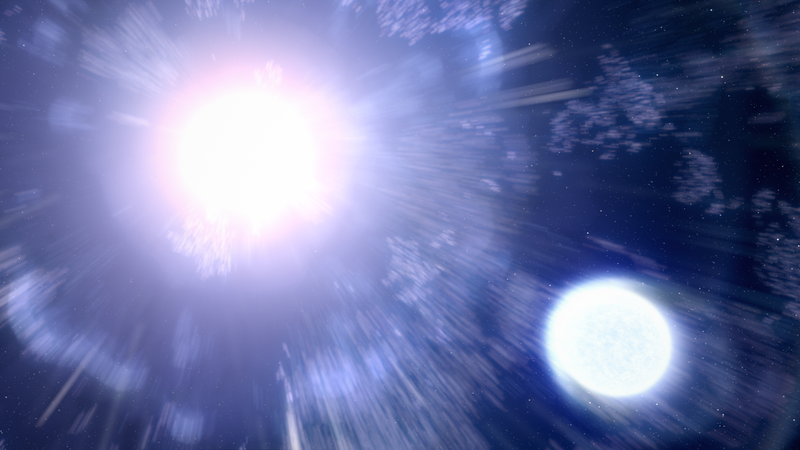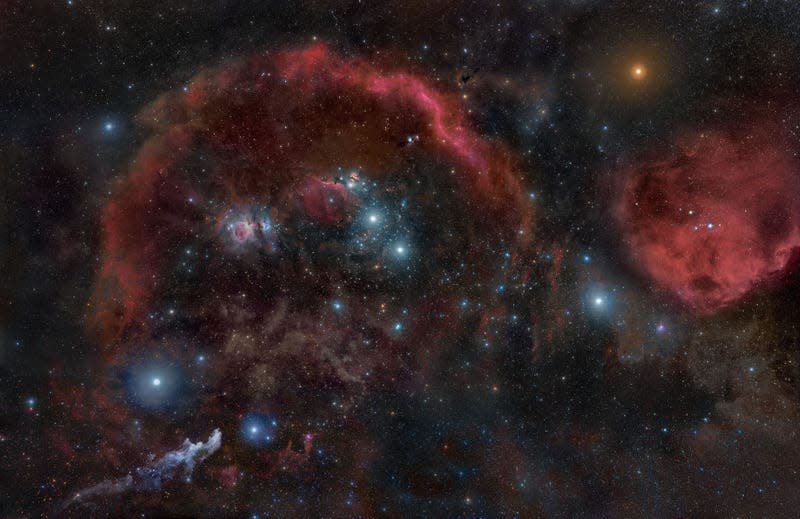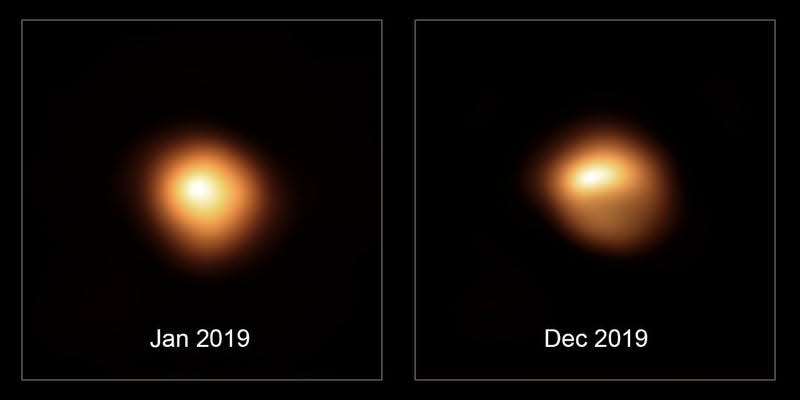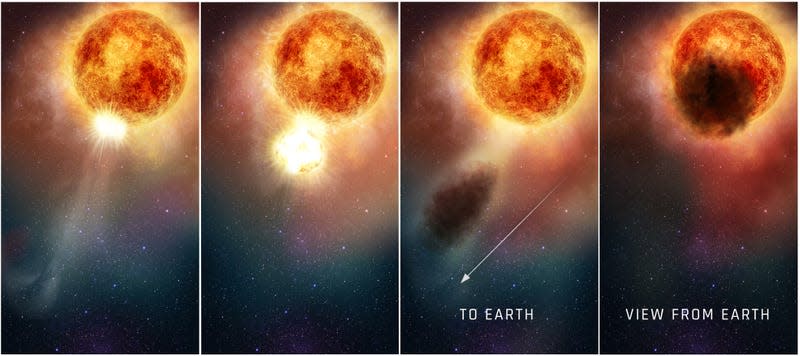No, Betelgeuse Won’t Go Supernova in 'Tens of Years'—or Even Centuries

The expiration date of Betelgeuse, a massive dying star about 642 light-years from Earth, is a hot topic in astronomy because of the star’s superlative size and its life cycle stage.
Betelgeuse is between 10 and 20 times the mass of our Sun, with a radius about 900 times greater. It’s burning quickly, and soon (in cosmic terms) will die.
Read more
When stars die, they expel most of their material out into the cosmos in a remarkable explosion called a supernova. If the conditions are right, the supernova leaves a serene stellar nebula in its wake.
Our own Sun will go through this process in about 5 billion years, but Betelgeuse is much, much closer to its endgame. And while stars in the distant universe go supernova all the time, Betelgeuse is in our own galaxy, basically on our doorstep in cosmic terms.
Earlier this month, a team of researchers posted a paper to the preprint server arXiv. In the paper, the team posited that Betelgeuse is already in “the late stage of core carbon burning,” and thus was a solid candidate for our galaxy’s most imminent supernova. “According to this figure, the core will collapse in a few tens years after the carbon exhaustion,” the researchers wrote.
On social media, some took this to mean the supernova would occur in the next century, or even in the next few decades. But carbon burning is a slow process, even if Betelgeuse—which we’re allowed to write as many times as we want without supernatural repercussions—is at that point.
In an email to Gizmodo, Hideyuki Saio, an astronomer at Tohoku University and the preprint’s lead author, told Gizmodo that the team predicts the supernova will happen in “less than a few hundred years.”

To an extent, the buzz around Saio’s revised timeline is a victim of people not closely reading the conclusion of his team’s paper. But even so, scientists unaffiliated with the research say that the team’s model doesn’t explain the star’s situation.
“It’s impossible for us to see what’s going on inside of even our own Sun, let alone a star that’s hundreds of light-years away,” said Emily Hunt, an astronomer at the Universität Heidelberg who was not affiliated with the recent paper, in a phone call to Gizmodo. “Just because the model explains the observations, it does not mean that the model is correct.”
“It’s really bad that we’ve seen so many people take up this one paper and take it as gospel, when actually it’s just one interpretation of the observations,” Hunt added.
Betelgeuse is quite young—about 10 million years old—but will burn out much more quickly than the Sun. Over the course of its evolution, Betelgeuse may have changed color in the night sky, which would explain why ancient descriptions of the star characterize the red ball of gas as more yellow.

SPHERE images showing Betelgeuse’s Great Dimming.
In recent years, Betelgeuse has undergone an unusual amount of activity, spurring discussion of when the fateful supernova might occur. In 2019, the star had a surface mass ejection, spewing about 400 billion times more mass from its surface than one of our Sun’s coronal mass ejections (CMEs), according to NASA.
The giant star substantially dimmed. The period is known as the Great Dimming. Astronomers now believe the dimming was caused by a stellar burp that spewed dust from the star, partially obscuring Betelgeuse from view.
“It is unlikely that Betelgeuse is as evolved as they claim it to be,” said Miguel Montargès, an astronomer at the Sorbonne Université and a co-author of a 2021 paper in Nature describing the dust enshrouding Betelgeuse, in an email to Gizmodo. “However, if Betelgeuse had a previous exchange of matter with a companion that is hidden inside or close to the star itself, or with a past dead companion, we could be facing non-single star evolution with many uncertain parameters. This would leave the debate open for its evolution.”
Montargès said that the team’s model required a larger solar radius (about 1,300 Suns long) than what is observed (about 800 to 900 solar radii), and if Betelgeuse had shrunk as much as the team claimed, astronomers would see the star’s surrendered material.
“I must stress that with our current knowledge, assuming the non-interacting star scenario which we have no reason to discard, Betelgeuse should be in helium core burning, and should explode in no less that tens of thousands of years,” Montargès added.

An illustration showing how an ejection of material caused dust grains to obstruct the Earthlings’ view of Betelgeuse.
Vexingly, the stage of Betelgeuse’s burn—that is, what element the star is currently using as fuel—is not apparent from observations. As stars progress through their life cycles, they burn different fuel (namely hydrogen and helium), with carbon burning occurring in the star’s death throes.
“One of the difficulties with this problem is that a carbon-burning Betelgeuse may look exactly like it does now—that’s why there’s this debate,” said Meridith Joyce, an astronomer at Konkoly Observatory in Hungary, in an email to Gizmodo. “If it were easy to tell whether a star is undergoing helium vs carbon burning simply by observation, we could stop arguing!”
Alongside two co-authors, Joyce published a comment rebutting the Saio team’s paper in the Research Notes of the American Astronomical Society. Joyce’s team posited that Saio’s team used an incorrect radius for Betelgeuse in making their claims, and the way they modeled the star ultimately yielded an inaccurate (that is to say, too-soon) timeline for Betelgeuse’s finale.
“Our team maintains that Betelgeuse’s time-until-supernova is of the order of 100,000 years, a number that comes (primarily) from the helium burning condition,” Joyce added. “It wouldn’t be scientific to be more precise than that; there are far too many unknowns in stellar modeling.”
Everyone agrees that more definitive measurements of Betelgeuse’s distance would be useful for determining the star’s true brightness and, thus, where it is in its life cycle.
Everyone wants to see a star die, which may be why people got excited about the “few tens years” terminology in the Saio et al. paper. When research finds that Betelgeuse will go supernova in a sooner timeframe than was predicted in previous papers—and centuries-long time scales are quite soon in stellar terms— it’s bound to create more buzz than research that affirms Betelgeuse still has a long way to go.
But if you’re keen on seeing a supernova, you’d best look beyond our local supergiant. Montargès said the stars eta Carinae and VY Canis Majoris (which the Minnesota Institute for Astrophysics calls “Betelgeuse on steroids”) are better bets for the next supernova in our galaxy.
Or you could always wait for space telescopes like Webb or Hubble to image their next supernova, somewhere in the more distant cosmos. Other telescopes—like that at the soon-to-open Rubin Observatory in Chile—will aim to constantly image the night sky, in the hopes of catching fleeting events like the beginning of a supernova as they happen.
More: How Do We Know When the Sun Will Die?
More from Gizmodo
Sign up for Gizmodo's Newsletter. For the latest news, Facebook, Twitter and Instagram.

